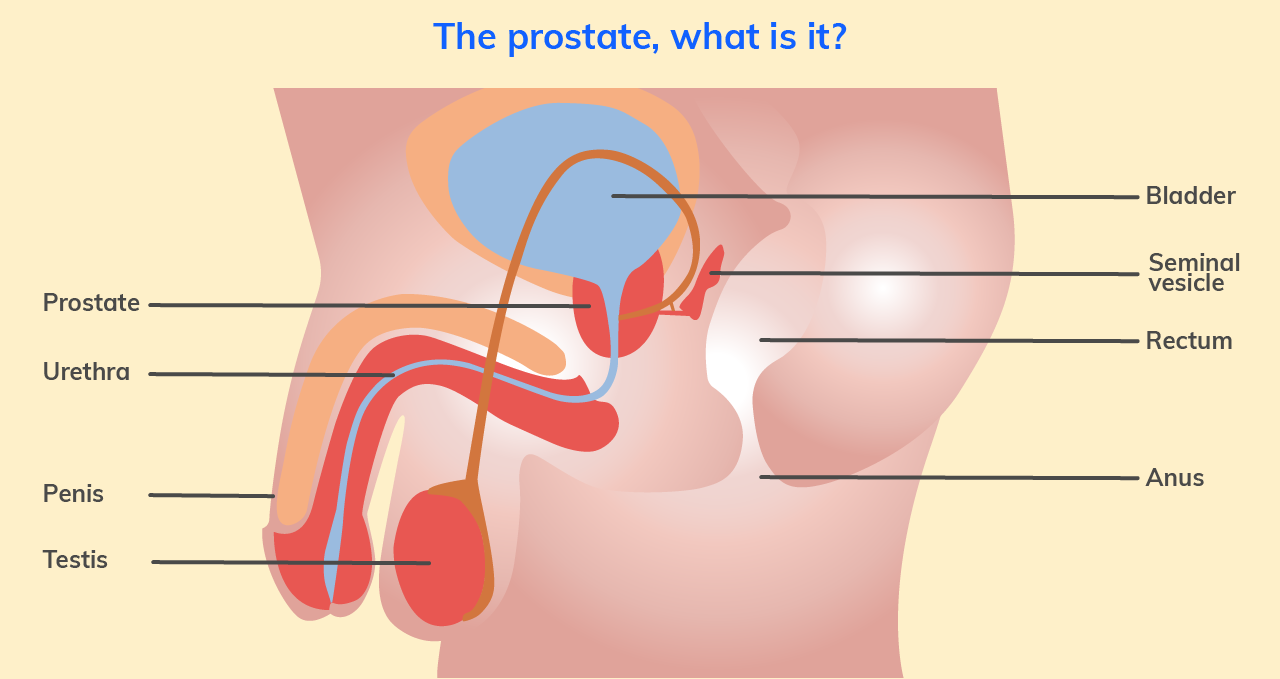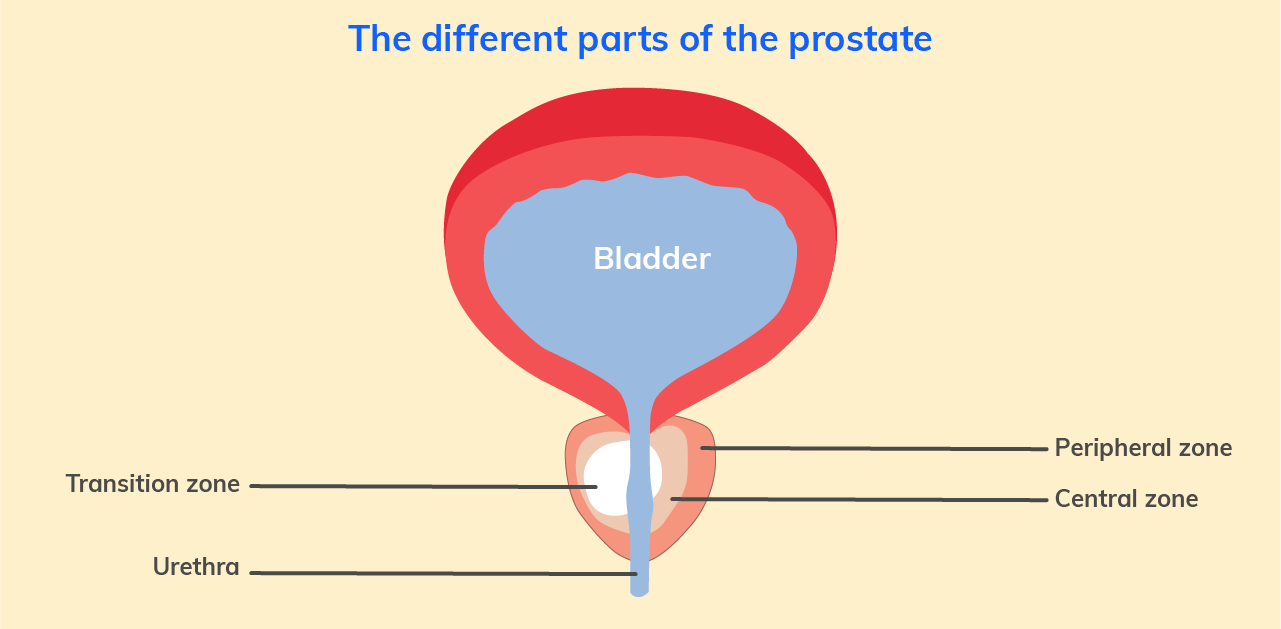Prostate: small organ, important functions!
Learn all about the role of this male gland!

Learn all about the role of this male gland!
This small male gland, the size and shape of a chestnut, is located at the crossing of the urinary and genital systems. The diagram below clarifies its location: under the bladder, in front of the rectum, and around the urethra which is the tube that drains urine from the bladder.
Nearby, the testes produce sperm. The seminal vesicles, located on either side of the prostate, secrete the seminal fluid. During sexual arousal, the prostate pushes this liquid into the urethra, where it is mixed with sperm to form the semen.

Its unique role is to participate in the function of reproduction. To do this, it secretes a fluid rich in nutrients (proteins and minerals) and enzymes promoting the penetration of sperm into the woman's cervix. This fluid allows them to survive inside the vagina. These prostatic secretions are stored and enriched in the seminal vesicles.
The prostate does not play a role in the urinary system, but its location has implications when its size changes (urinary disorders, infections, etc.).
With age, the prostate may show some weaknesses. It is often under these circumstances that one discovers it! There are many related disorders, but the most common is benign prostatic hypertrophy.
The prostate is made up of different parts, which can be the target of specific disorders. These include:

Claire Alcalay
References:
Ameli.fr / Urofrance.org (association française d’urologie)
http://www.cgoa.fr/anatomie-physiologie-mascul.pdf (Collège des gynécologues et obstétriciens d’Alsace)
How can we live well every day with a prostate disorder?
A study conducted on the prostate and its manifestations shows that all issues related to the prostate are associated with impotence, the loss of virility and ageing. During the emergence of prostate disorders, these prejudices may lead to denial and isolation.
In addition, the digital rectal exam (the standard procedure for examination of the prostate) constitutes another obstacle, because it involves the introduction of a finger into the rectum to assess its volume, its regularity…
Therefore, we should not hesitate to consult a doctor or a urologist to overcome isolation. In addition, a doctor will establish a diagnosis and help to find the solutions (medicines or not) best adapted to each case, with a growing tendency toward more comprehensive care.
But doctors are not the only source of support: close relatives or friends may offer a sympathetic ear and allow you to talk about this problem! Any health care professional can also give you sound advice: your pharmacist or a psychologist for example!
In addition, it is important to know that a healthy lifestyle is crucial for the efficient management of this type of problem!
Sexual disorders may appear when the prostate is affected by benign prostatic hypertrophy or any other medical condition (cancer, prostatitis, etc.). These disorders may range from a weaker ejaculation flow to more severe conditions such as erectile dysfunction. In fact, the nerves inducing an erection are in contact with the prostate.
Therefore, they are sensitive to any change affecting this gland. In addition, pharmaceutical or surgical treatments may also cause sexual difficulties. Do not hesitate to discuss these problems with your doctor because there are solutions: certain plants may help considerably, but more pharmaceutical treatments are becoming available!
Claire Alcalay
www.urofrance.org/la-prostate-symbole-de-la-vulnerabilite-masculine
Améli